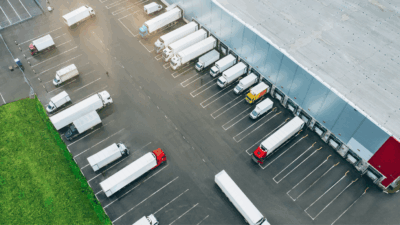The way consumers shop has completely transformed over the last two decades. Now, consumers turn ever increasingly to the internet for purchases—from household necessities like groceries and toilet paper, to big-ticket items like couches and mattresses—the internet is a one-click solution to consumer wants and needs.
But online shopping has also changed consumer expectations for how and when they will receive their items. With seemingly endless competition to choose from online, customers expect goods to be delivered quickly to their homes and offices, often within a day or two of their initial order, which impacts purchasing decisions
A consumer insights survey conducted in 2018 by PwC reported that the majority of consumers—62%—expect their purchases to be delivered within two days of ordering. The same survey also found that customers value perks like free return shipping (65%) and same-day delivery (50%).
While shipping can be costly for both buyer and seller, customers are willing to pay more to get their items fast. A McKinsey report found that 23% of consumers are willing to pay for same-day delivery. Businesses who offer fast shipping are more likely to gain customers—and keep them coming back.
The ability to offer expedited shipping, however, is a logistical challenge—and one that some retailers are working to change by exploring new warehousing solutions through creating temporary pop-up warehouses, similar to retail pop-up stores.
For some distribution facilities, more and smaller is better
Delivery is expensive, and according to BI Intelligence, final-mile delivery can account for roughly 53% of shipping and transportation costs. Retailers can reduce these transportation costs by moving merchandise closer to their customers and by utilizing warehouse space on an as-needed basis.
We’ve written about how retailers can reduce shipping return costs by instituting creative return policies such as donating small dollar purchases instead of having consumers re-ship them, as well as experimenting with lockers and drones. Another specific solution, which may have the greatest impact in decreasing transportation costs, is moving the product closer to end-users in temporary, pop-up warehouses.
Pop-up warehouses offer an excellent way for retailers to cater to their customer base and cut shipping costs at the same time. They work on a pay-for-what-you-need basis. Retailers stock items for peak season in peak areas ahead of time and use these warehouses as a temporary solution in a temporary location.
Why do pop-up warehouses work? Quite simply, the cost to rent and stock a small warehouse, close to customers and during peak seasons, is exponentially less than the cost of shipping from one or two large, centrally located facilities. In some cases, pop-up facilities can combine storage with on-site retail and pick-up, eliminating the cost of shipping completely.

Industrial spaces are difficult to find in many real estate markets, but retail spaces—like unleased spaces in malls and shopping centers, or spaces that cater to short-term lease agreements for businesses like Halloween stores—offer many perks for sellers. These spaces are usually centrally located, near existing infrastructure, see lots of foot traffic and are designed to hold large quantities of merchandise.
Businesses that offer primarily online sales models—like eyewear company Warby Parker, mattress company Casper and furniture seller Wayfair—have recently expanded into physical retail spaces, both temporary and permanent, as a way to give buyers all the convenience of online shopping and the touch-and-feel experience of traditional brick-and-mortar retail. These businesses have a strategy. By placing their pop-up shops in geographic pockets with high numbers of loyal customers during peak buying seasons, they can attract a wide range of buyers and eliminate final-mile shipping concerns.
Pop-up shops don’t need to be a full-service experience. As we often hear in the retail industry, 80% of sales come from 20% of the products (or customers). Retailers can focus on targeted product types and open only during peak times, like the three months surrounding the holiday season. For clothing retailers, perhaps this could be a month or two at the beginning of spring/summer swimwear season. This solution saves on rent, shipping and year-round warehousing costs. Launching a pop-up costs an average of 80% less than opening a new brick-and-mortar store.
Other retailers are taking the opposite route—offering more products online, and then expanding small warehouses where customers can pick up goods. Swedish furniture seller IKEA is currently experimenting with augmented reality technology that lets buyers see what furniture might look like inside their home. Customers then pick up their orders from small warehouses for a buying process that cuts out shipping costs completely.
Navigating the challenges of the pop-up model
The retail industry as a whole is moving toward a more flexible model for sales and shipping. We live in an on-demand economy, and innovative solutions for streamlined delivery are necessary. Still, retailers may have challenges when experimenting with pop-up models. One common challenge is leasing—finding a property owner who is willing to accept a short-term lease agreement instead of traditional 5- or 10-year models can be difficult.
Then there’s the question of where to locate. To answer this, businesses should understand where their clients are. Most commonly, companies perform network optimizations to better understand how many and where to locate distribution facilities. In the near future, artificial intelligence and other technologies will help locate “hot spots” and help businesses reach efficient shipping goals. A small move of 50 miles or less can help businesses expand their ability to ship quickly. We’ve seen companies who are only able to offer one-day shipping to 56% of their clients gain the ability to offer one-day shipping to 97% of clients, just by moving their warehouse a few hundred miles.
Reducing shipping distance is essential for cutting final-mile delivery costs. Network optimization models allow us to model transportation and rental costs and overhead. We can optimize shipping speed and minimize cost and complexity. And, as always, there’s the question of labor. Pop-up warehouses aren’t high-tech. They’re a temporary place to store—and sell—a limited number of products for a limited amount of time, and they typically have a lower level of capital expenditures and are thus reliant on temporary staff associates to organize, ship and sometimes sell products.
In the right location, pop-up warehouses provide customers with the option to bypass traditional platforms. Final-mile delivery companies can tap into the local labor market to help deliver goods; lockers and other pick-up options allow consumers to get their items immediately—bypassing the high costs of shipping.
Whether incorporating retail sales into pop-up warehousing locations or simply creating temporary storage spaces closer to customers during periods of high sales volume, pop-up warehouses offer retailers flexibility and allow them to trim delivery and overhead costs at the same time.
Gregory Healy, Senior Vice President, leads the U.S. Supply Chain and Logistics Consulting team. With over 20 years of global manufacturing and supply chain experience as both a senior executive in the corporate world, as well as owning a supply chain consulting practice and a third party logistics business, Gregory has real world experience that brings a unique perspective to the Colliers team.

 Colliers Insights Team
Colliers Insights Team
 Mike Spears
Mike Spears Greig Lagomarsino
Greig Lagomarsino Peter Danna
Peter Danna Christopher Sheehan
Christopher Sheehan
 Matt Gannon
Matt Gannon Craig Hurvitz
Craig Hurvitz
 Anjee Solanki
Anjee Solanki